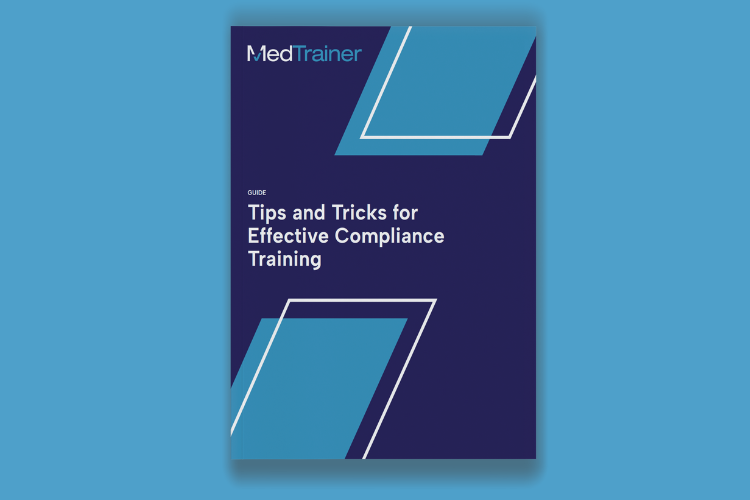You’re driving down the road and the Check Engine light comes on. The hair on the back of your neck rises when you walk in a dark room. Those are examples of red flags – literal or metaphorical signs that some problem requires attention or there is imminent danger. Healthcare has its share of warning signs. But what is a red flag in health compliance?
A “red flag” in healthcare compliance refers to a warning sign or indicator that suggests a potential issue or violation of healthcare laws, regulations, or policies. These red flags are used to identify situations or activities that may raise concerns about fraud, waste, abuse, or non-compliance with healthcare regulations.
Red Flags in Healthcare Compliance
Red flags can vary depending on the context, but some common examples in healthcare compliance include:
- Billing Irregularities: Unusual billing patterns, such as overcharging, upcoding (billing for a more expensive service than provided), or unbundling (separately billing for services that should be billed together), can raise red flags.
- Documentation Inconsistencies: Incomplete or inaccurate medical records, missing policies, or inconsistent coding practices can be considered red flags.
- Suspicious Relationships: New or uncommon relationships or financial arrangements between healthcare providers and suppliers could indicate kickbacks or referrals for financial gain, which are red flags.
- Unauthorized Access: When people who wouldn’t typically access a patient’s information, it can be a red flag for identity theft, snooping, or fraudulent insurance claims.
- Medication Errors: Unusual prescribing patterns, excessive opioid prescriptions, or prescriptions for controlled substances without proper documentation can raise concerns.
- Low Number of Incident Reports: When an organization logs a remarkably low number of incident reports, it can indicate a red flag in healthcare compliance. Employees may be afraid to report or may not have an easy to way to report incidents.
- High Readmission Rates: When there’s a high chance of patients returning after a procedure, it can be indicative of a compliance-related red flag. Maybe infection control procedures aren’t being followed or employees need a bit more training on certain topics.
- Patient Complaints or Whistleblower Reports: Complaints from patients or reports from whistleblowers regarding unethical or illegal practices within a healthcare organization can be red flags that trigger investigations.
Mitigating Red Flags in Healthcare Compliance
Healthcare organizations and compliance officers are responsible for monitoring and addressing these red flags to ensure adherence to healthcare regulations and prevent potential legal and financial consequences. Identifying and addressing red flags promptly is crucial in maintaining the integrity of the healthcare system and providing quality care to patients.
Here are some steps and strategies to help prevent red flags in healthcare compliance:
- Establish a Strong Compliance Program
- Develop and implement a comprehensive healthcare compliance program within the organization. Appoint a compliance officer or team responsible for overseeing compliance efforts.
- Educate and Train Staff
- Provide regular training and education to all employees on compliance policies and regulations. Ensure that employees are aware of their roles and responsibilities in compliance.
- Maintain Clear Policies and Procedures
- Develop clear and comprehensive policies and procedures that outline compliance requirements. Ensure that all employees have access to and understand these policies.
- Conduct Regular Auditing and Monitoring
- Conduct regular internal audits and monitoring to identify potential issues or red flags. Review billing, coding, documentation, and financial practices for compliance.
- Maintain Reporting Mechanisms
- Establish a confidential reporting system for employees to report concerns or violations. Encourage a culture of reporting without fear of retaliation.
- Third-Party Vendors and Contracts
- Ensure that contracts with third-party vendors and suppliers include compliance provisions. Monitor the activities of third parties to prevent potential violations.
- Manage Documents and Policies
- Maintain accurate and complete patient records, billing records, and financial documentation. Ensure that documentation reflects the services provided accurately.
- Protect Patient Privacy and Data Security
- Implement robust data security measures to protect patient information from breaches. Comply with HIPAA regulations for patient privacy.
- Monitor Physician Relationships
- Monitor and review relationships with physicians and other healthcare providers for compliance with anti-kickback and Stark Law regulations.
- Conduct Regular Compliance Risk Assessment
- Conduct periodic risk assessments to identify potential compliance risks and vulnerabilities. Develop mitigation strategies for identified risks.
- Corrective Action Plans
- Develop and implement corrective action plans to address identified compliance issues promptly. Take appropriate disciplinary action when necessary.
- Complete External Audits and Reviews
- Engage external auditors or legal experts periodically to conduct independent reviews of compliance practices. Address any findings from external audits promptly.
- Continuously Improve
- Continuously update and improve the compliance program based on changing regulations and industry standards.
- Communication and Training Updates
- Keep employees informed about changes in regulations and compliance requirements through regular communication and training updates.
- Response to Whistleblower Reports
- Establish a protocol for responding to whistleblower reports, ensuring thorough investigations and appropriate actions.
Compliance Software Can Reduce Your Risk of Red Flags
MedTrainer, with its comprehensive suite of tools and resources, offers valuable support to healthcare organizations as they undertake this critical process, ultimately contributing to improved compliance and patient care. By systematically addressing compliance risks, healthcare organizations can foster a culture of accountability and ensure the delivery of safe and high-quality healthcare services.
The platform includes robust document management capabilities, making it easier for organizations to maintain and update policies and procedures as needed to remain in compliance with the latest regulations. The reporting and analytics tools allow organizations to track and monitor compliance efforts, making it easier to identify areas of concern and prioritize remediation activities.
MedTrainer’s learning management system (LMS) enables organizations to deliver compliance training and education to staff, ensuring that employees are well-prepared to meet compliance requirements. The incident management module helps organizations respond effectively to compliance incidents, ensuring that issues are addressed promptly and thoroughly.
Get tips and tricks for effective compliance training.

